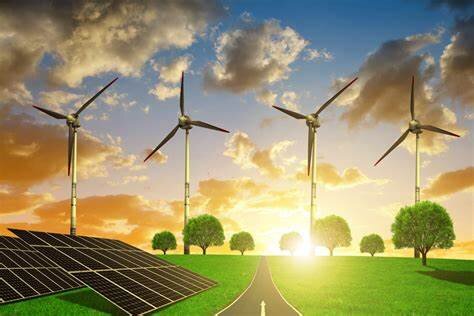In the global effort to combat climate change and transition towards sustainable energy sources, governments play a pivotal role in shaping policies and initiatives that promote the adoption of clean energy technologies. The phrase “For clean energy, government rolls out power tools” suggests proactive measures aimed at accelerating the deployment of renewable energy sources and reducing reliance on fossil fuels. This article explores the significance of government interventions, the impact on clean energy sectors, technological advancements, and the broader implications for global energy transition efforts.
Government Initiatives Driving Clean Energy Adoption
Governments around the world are increasingly recognizing the urgency of transitioning to clean energy to mitigate the impacts of climate change and achieve environmental sustainability goals. Key initiatives include:
- Renewable Energy Targets: Setting ambitious targets for renewable energy generation to reduce greenhouse gas emissions and promote energy independence.
- Financial Incentives: Providing subsidies, tax credits, grants, and low-interest loans to incentivize investment in clean energy infrastructure and technologies.
- Regulatory Support: Implementing policies and regulations that favor renewable energy development, such as renewable portfolio standards and carbon pricing mechanisms.
- Research and Development Funding: Investing in research, innovation, and development of clean energy technologies to drive down costs and improve efficiency.
Impact on Clean Energy Sectors
Government support has a profound impact on the growth and competitiveness of clean energy sectors:
- Solar Energy: Subsidies and feed-in tariffs have accelerated the deployment of solar photovoltaic (PV) systems, making solar energy increasingly cost-competitive with conventional fossil fuels.
- Wind Energy: Supportive policies, such as production tax credits and renewable energy auctions, have spurred investments in wind farms and offshore wind projects.
- Energy Storage: Funding for research and development in battery technologies has advanced energy storage solutions, enabling integration of intermittent renewable energy sources into the grid.
- Electric Vehicles (EVs): Incentives for EV adoption, such as purchase rebates and charging infrastructure investments, are driving the transition towards cleaner transportation alternatives.
Technological Advancements and Innovation
Government initiatives not only catalyze market growth but also stimulate technological advancements in clean energy:
- Advancements in Solar Technology: Research investments have led to improvements in solar cell efficiency, durability, and manufacturing processes, driving down costs.
- Grid Modernization: Smart grid technologies and digital solutions enable better management of renewable energy integration, enhancing grid reliability and efficiency.
- Energy Efficiency: Policies promoting energy-efficient buildings, appliances, and industrial processes contribute to energy savings and emissions reductions.
- Hydrogen and Other Emerging Technologies: Funding for hydrogen production, carbon capture and storage (CCS), and other emerging technologies supports diversification of clean energy solutions.
Economic and Environmental Benefits
The transition to clean energy offers significant economic and environmental benefits:
- Job Creation: Investments in clean energy sectors create jobs in manufacturing, installation, maintenance, and research, supporting economic growth and resilience.
- Health Benefits: Reduced air pollution from fossil fuel combustion improves public health outcomes and reduces healthcare costs associated with respiratory illnesses.
- Climate Resilience: Mitigating climate change impacts, such as extreme weather events and sea-level rise, through emissions reductions and sustainable development practices.
Global Implications and Challenges
Despite progress, challenges remain in achieving widespread adoption of clean energy:
- Policy Stability: Long-term policy commitments are essential to provide certainty for investors and developers in clean energy projects.
- Infrastructure Development: Scaling up infrastructure, including transmission lines and charging stations, is necessary to support increased deployment of renewable energy and EVs.
- Cost Competitiveness: Continued efforts to drive down the cost of renewable energy technologies and energy storage solutions are crucial for market competitiveness.
Disclaimer: The thoughts and opinions stated in this article are solely those of the author and do not necessarily reflect the views or positions of any entities represented and we recommend referring to more recent and reliable sources for up-to-date information.



